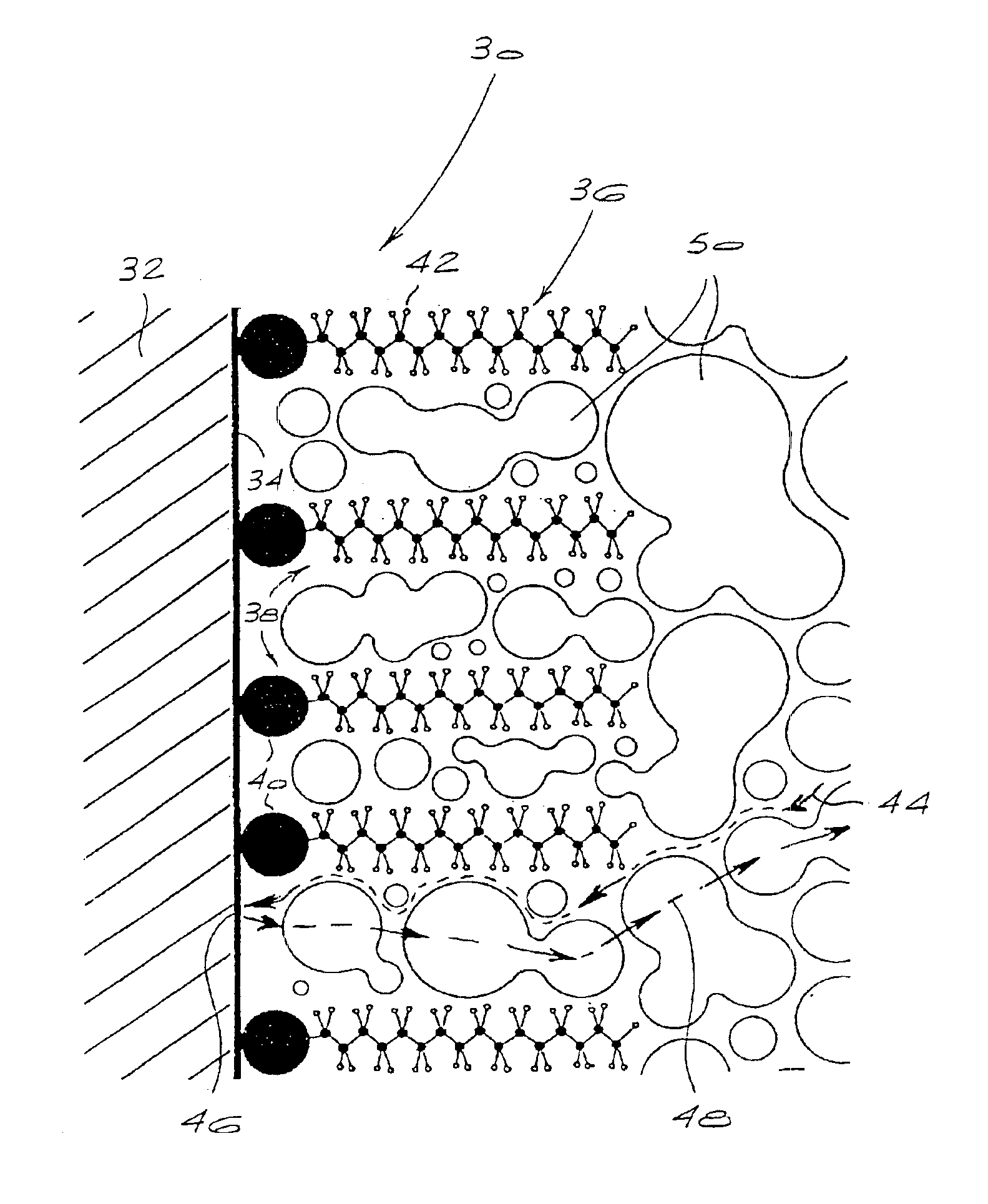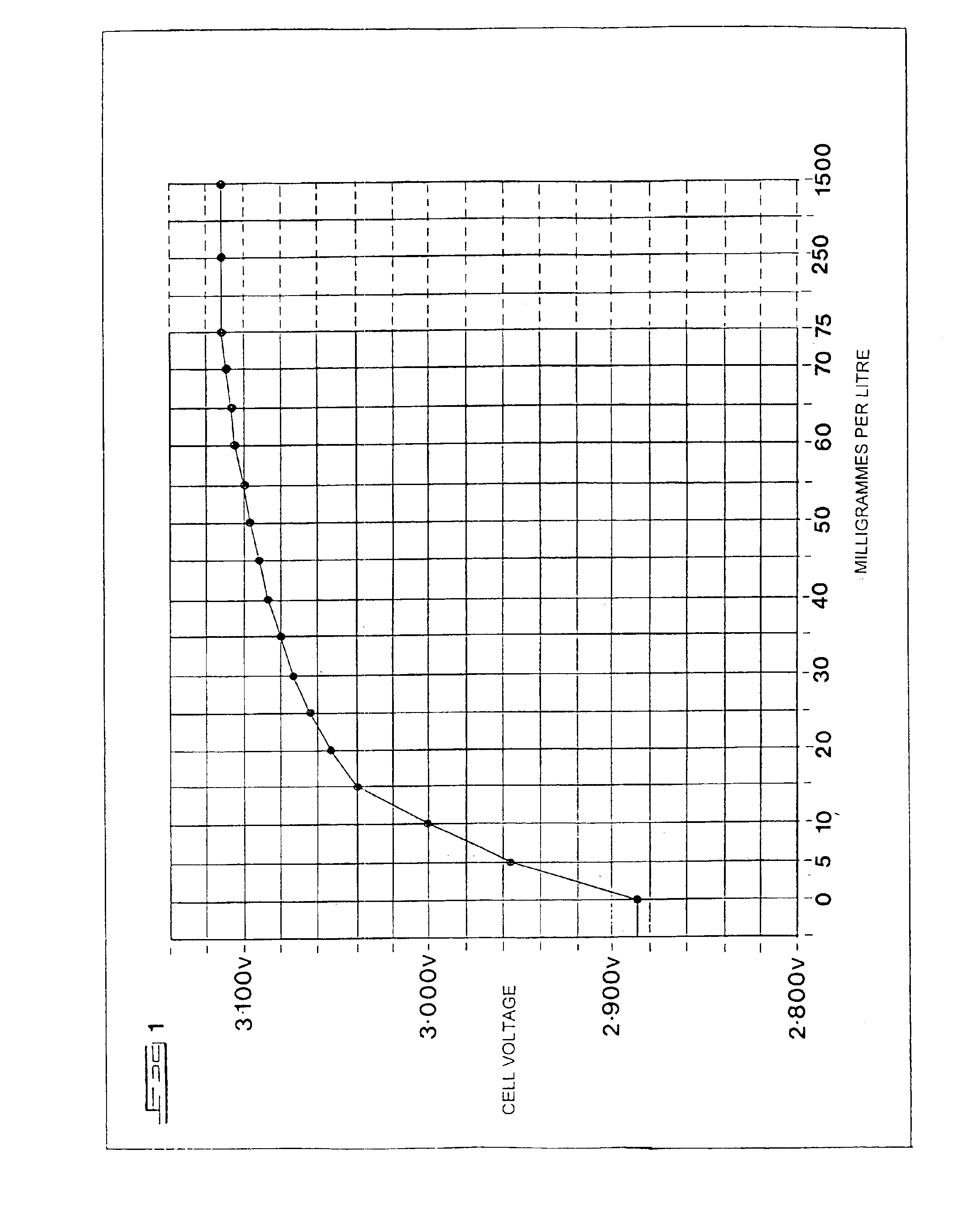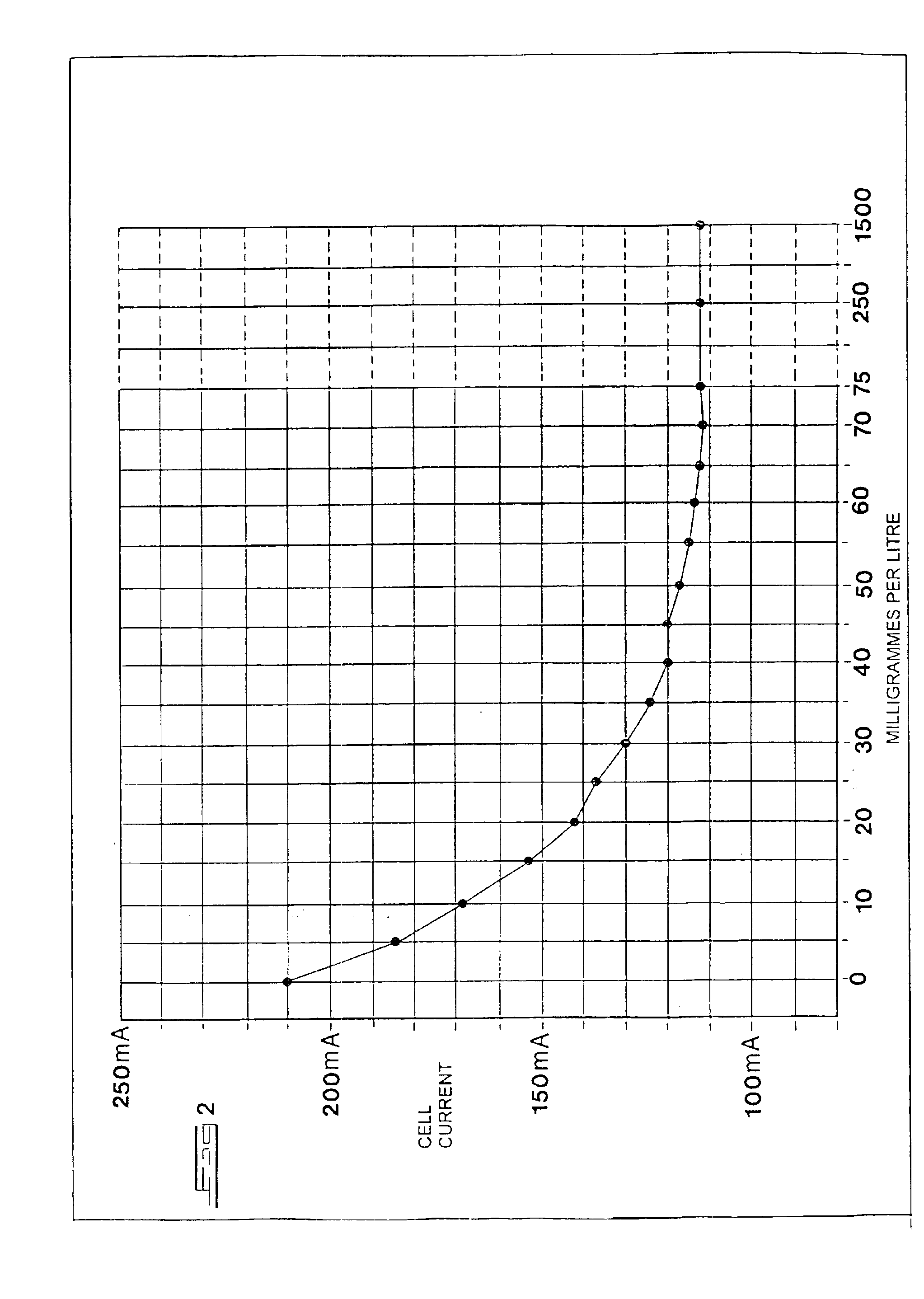Electrochemical cell
- Summary
- Abstract
- Description
- Claims
- Application Information
AI Technical Summary
Benefits of technology
Problems solved by technology
Method used
Image
Examples
example 1
[0039]A lead-acid battery cell was assembled with a positive electrode having an active component of lead dioxide in contact with the electrolyte and a negative electrode made of pure lead foil having a portion of lead in contact with the electrolyte. The electrolyte was procured from a suitable source of battery acid having a specific gravity of 1.260.
[0040]The material chosen for the negative electrode provided a comparatively small reactive material area and thereby added sensitivity to the test, which a conventional pasted electrode would not have provided.
[0041]The negative electrode was placed in contact with the battery acid of 1.260 SG for two days prior to incorporation into the lead-acid battery test cell.
[0042]The cell was subjected to a current of 150 mA until the electrodes began to emit gas bubbles. The current was turned off, and a small incandescent lamp rated at 2 V and 150 mA was connected across the cell's terminals, causing it to light up briefly.
[0043]Thereafter...
example 2
[0048]Thus a second test was conducted on another cell of the same page type, and under the same conditions, except that instead of maintained the current through the cell constant, the potential across the cell was maintained constant. The variation in current against increasing dosage concentration was recorded.
[0049]FIG. 2 shows a graph representing the current through the cell against the n-alkyl dimethyl benzyl ammonium chloride concentration, in milligrammes per litre, with increments of 5 mg / l at 10 minute intervals up to 75 mg / l, at a steady 3,000 volts throughout. The quantities dispensed thereafter were increased to 250 and 1 500 mg / l, as before. The temperature of the cell remained between 24.6 and 23.4° C. throughout the test.
[0050]The graph confirms that the current fell significantly upon addition of n-alkyl dimethyl benzyl ammonium chloride, even at a concentration of 5 mg / l, leveling out at approximately a half of the starting current.
[0051]Although the two graphs of...
example 3
[0052]Two cells of identical type to the cell in Examples 1 were assembled. The electrolyte was procured from the same source of battery acid having a specific gravity of 1.260.
[0053]The two cells were each in turn subjected to a current of 150 mA and the procedure for producing gas bubbles and connecting the incandescent lamp, followed by repeat gassing, as per Example 1, was applied.
[0054]Thereafter the first cell received a dosage of n-alkyl dimethyl benzyl ammonium chloride in a single application to provide a concentration in its electrolyte of 50 mg / l, while the second cell received no dosage. Both cells were subjected to a current of 150 mA following the dosing.
[0055]After intervals of 15 minutes of current, the potential across the electrodes of the second cell closely resembled the potential represented in the graph of FIG. 1 at 0 mg / l, and the potential across the electrodes of the first cell Resembled the potential represented at 50 mg / l.
[0056]After each cell had been sub...
PUM
 Login to View More
Login to View More Abstract
Description
Claims
Application Information
 Login to View More
Login to View More - R&D
- Intellectual Property
- Life Sciences
- Materials
- Tech Scout
- Unparalleled Data Quality
- Higher Quality Content
- 60% Fewer Hallucinations
Browse by: Latest US Patents, China's latest patents, Technical Efficacy Thesaurus, Application Domain, Technology Topic, Popular Technical Reports.
© 2025 PatSnap. All rights reserved.Legal|Privacy policy|Modern Slavery Act Transparency Statement|Sitemap|About US| Contact US: help@patsnap.com



